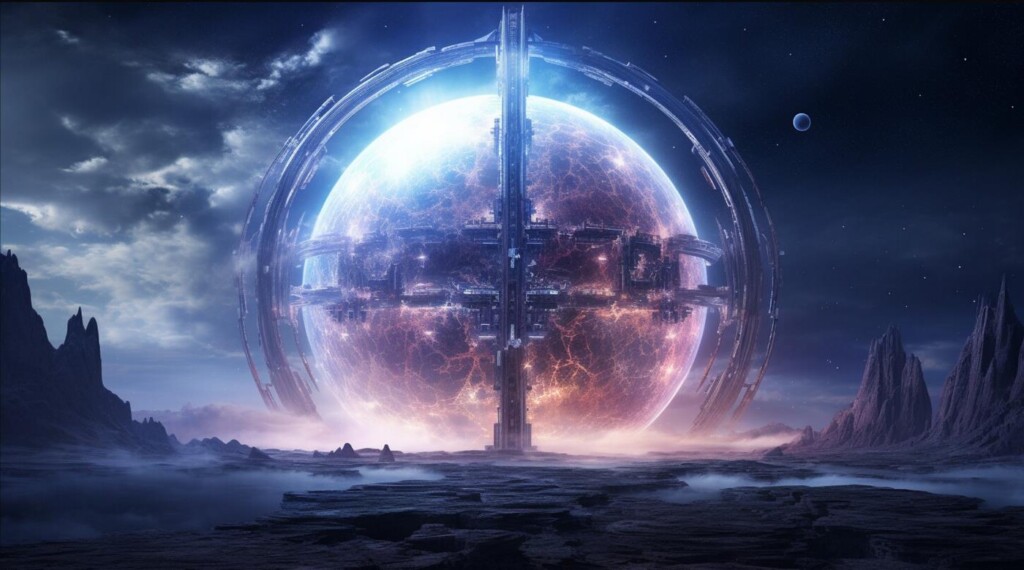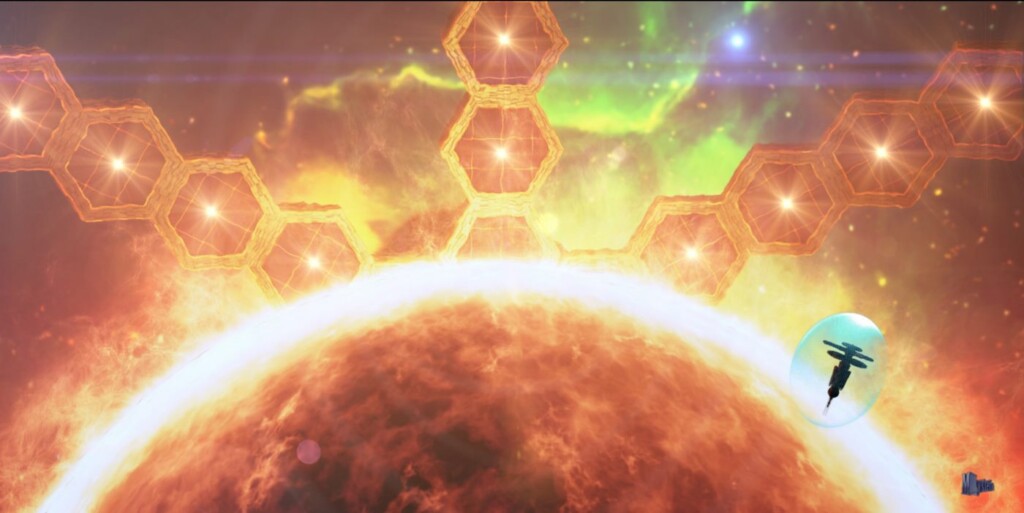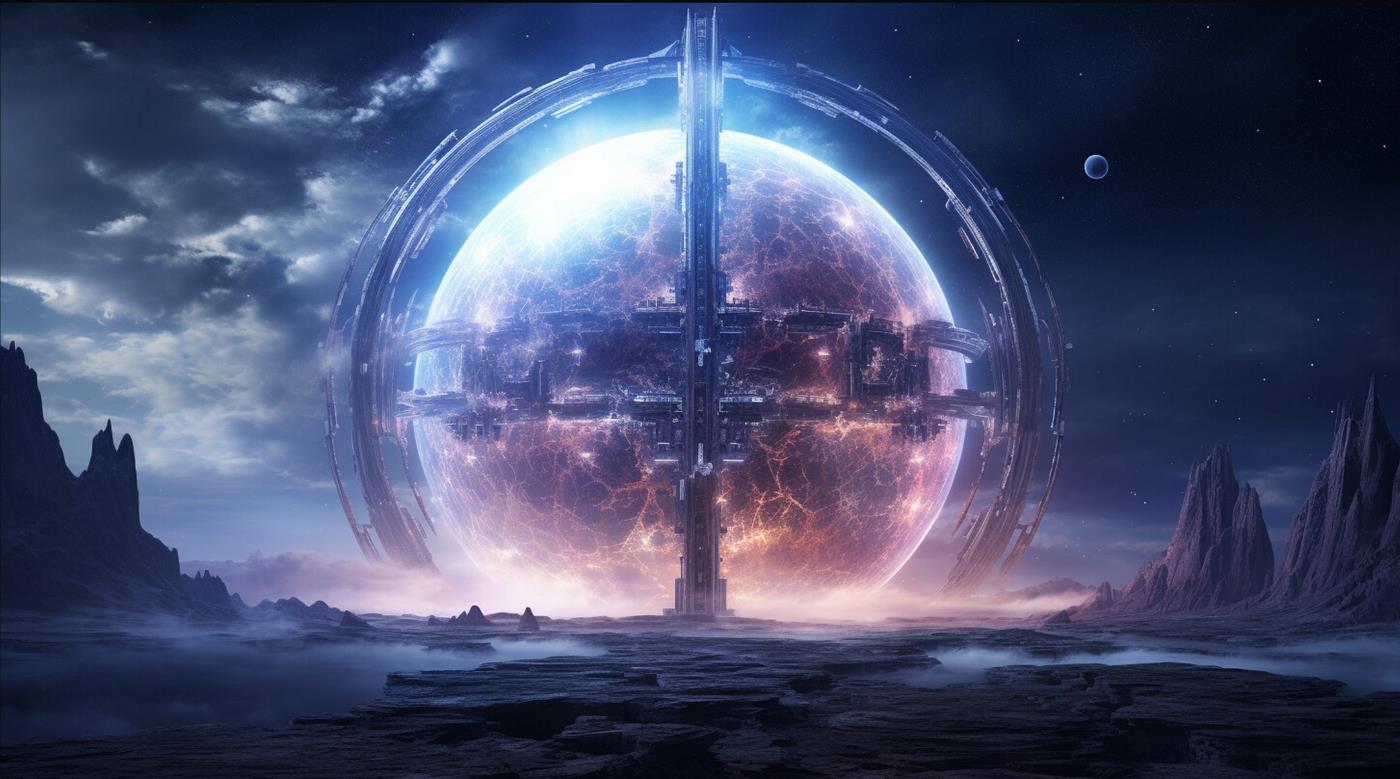
Astrophysicists recently put one of the great hallmarks of science fiction culture to the test, and used it to identify 7 stars that may harbor an alien civilization.
The 7 stars are glowing with infrared radiation in a way that cannot be explained by naturally occurring phenomena yet known to science.
The theoretical superstructure known as the ‘Dyson sphere’ was designed back in the 1960s by renowned British American physicist Freeman Dyson.
His idea was that, similarly to how metal smelting marked the end of the Stone Age and the start of the Bronze Age, all advanced civilizations would eventually harness the power of the star at the center of their home star system.
They would likely build a sphere, Dyson wrote, consisting of “a loose collection or swarm of objects traveling on independent orbits around the star.” However, his idea was captivating, and the concept of a Dyson sphere expanded to include fictional depictions of stars that were ensconced at the center of a twenty-sided sphere that included panels covered in cities and power plants.
Dyson was a serious scientist, but he openly admitted he got the idea for the sphere from Olaf Stapledon’s 1937 sci-fi novel Star Maker.
His official position was that if humanity wanted to search for signs of intelligent life in the galaxy, they would need a reliable signature to look for, which could be a biological sign like liquid water, or it could be a technological one.
Although the technology to do so didn’t exist in 1960, he proposed looking at stars to see if they bore a signature of waste heat like power plants give off here on Earth that would be detectable as infrared radiation, and that such radiation would indicate a civilization may be using the star as a power source.
Enter ‘Project Hephaistos.‘ A team of Swedish scientists along with colleagues from Penn State and the Indian Institute of Technology at Indore used historical data from telescopes that have picked up infrared signatures from any star located less than 1,000 light years from the Earth.
Their initial survey included 5 million hits, and the team applied several filters to remove as much data as possible before looking at each one individually.
“So far, we have seven sources that we know are glowing in the infrared but we don’t know why, so they stand out,” said lead study author Matías Suazo, a doctoral student at Uppsala University in Sweden.
“It’s difficult for us to find an explanation for these sources because we don’t have enough data to prove what is the real cause of the infrared glow,” he said. “They could be Dyson spheres, because they behave like our models predict, but they could be something else as well.”
OFF-WORLD MINING: Mercury Could Have A Layer of Diamonds 11 Miles Thick Beneath the Surface
All 7 candidate stars are classified as Red Dwarf stars, the most common type in the universe, and smaller than our Sun. According to NASA, planets orbiting red dwarfs have a higher chance of being inhabitable.
Other potential explanations for the infrared heat could be galaxies directly behind the observed stars whose radiation signature appears to be emanating from the latter. It could also be that the stars are young enough to maintain their protoplanetary disks which emit such radiation.

The authors admit it could be a natural phenomenon, and suggest that telescopes with greater capabilities for direct imaging be used to investigate, rather than the surveyor observatories WISE and Gaia they used for in their dataset.
YOU MAY ALSO LIKE: China’s Lunar Probe Returns World’s First Samples from Far Side of the Moon
As the decades since Dyson’s original hypothesis have marched on, humanity’s space organizations and astronomers have gotten their hands on more and more sophisticated tools. The universe is becoming increasingly familiar to us, and realistic dialogue of turning the Moon into a gas station, mining asteroids, and colonizing Mars, is sounding less and less like a distant, out-of-reach dream.
32 years after the first exoplanets were discovered, the confirmed number has grown to over 5,000, and some are hypothesized as liveable.
Yet it’s important to take a step back and realize that as infeasible as it is to imagine colonizing another world, a Dyson sphere is many orders of magnitude more challenging.
MORE DEEP SPACE DISCOVERIES: New Temperate Planet That Could Support Human Life Discovered in Pisces Constellation by UK Scientists
“If you picture ourselves having as much energy as the sun is providing every second, we could do unheard-of things,” Suazo told CNN. “We could do interstellar travel, maybe we could even move the entire solar system to our preferred location, if we wanted.”
Suazo added that the Dyson sphere would be larger than the combined mass of all material on Earth, and that Dyson suggested we “dismantle” Jupiter and use that for raw materials.
SHARE This Awesome Space Project And Intriguing Mystery With Your Space Lovers On Social Media…




















